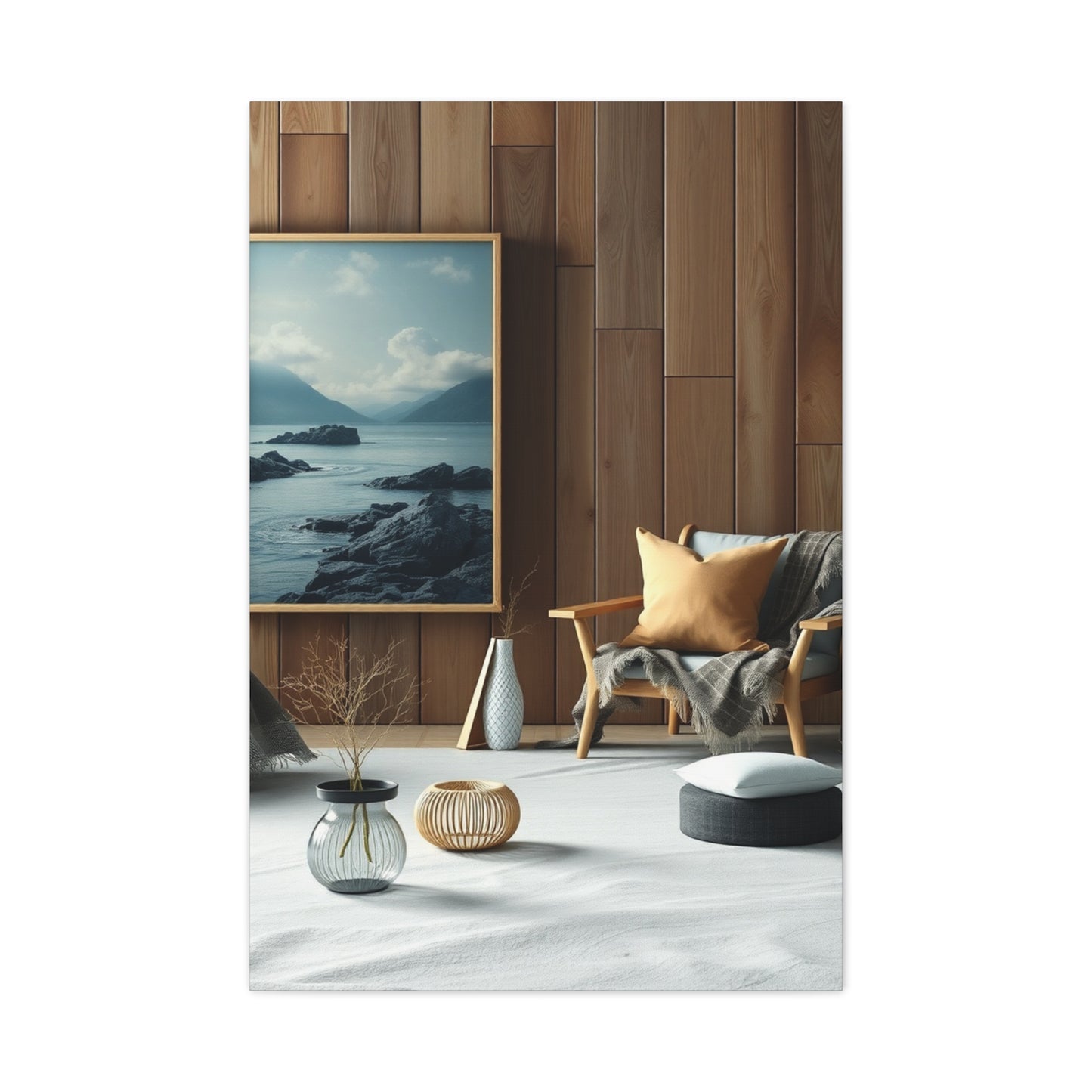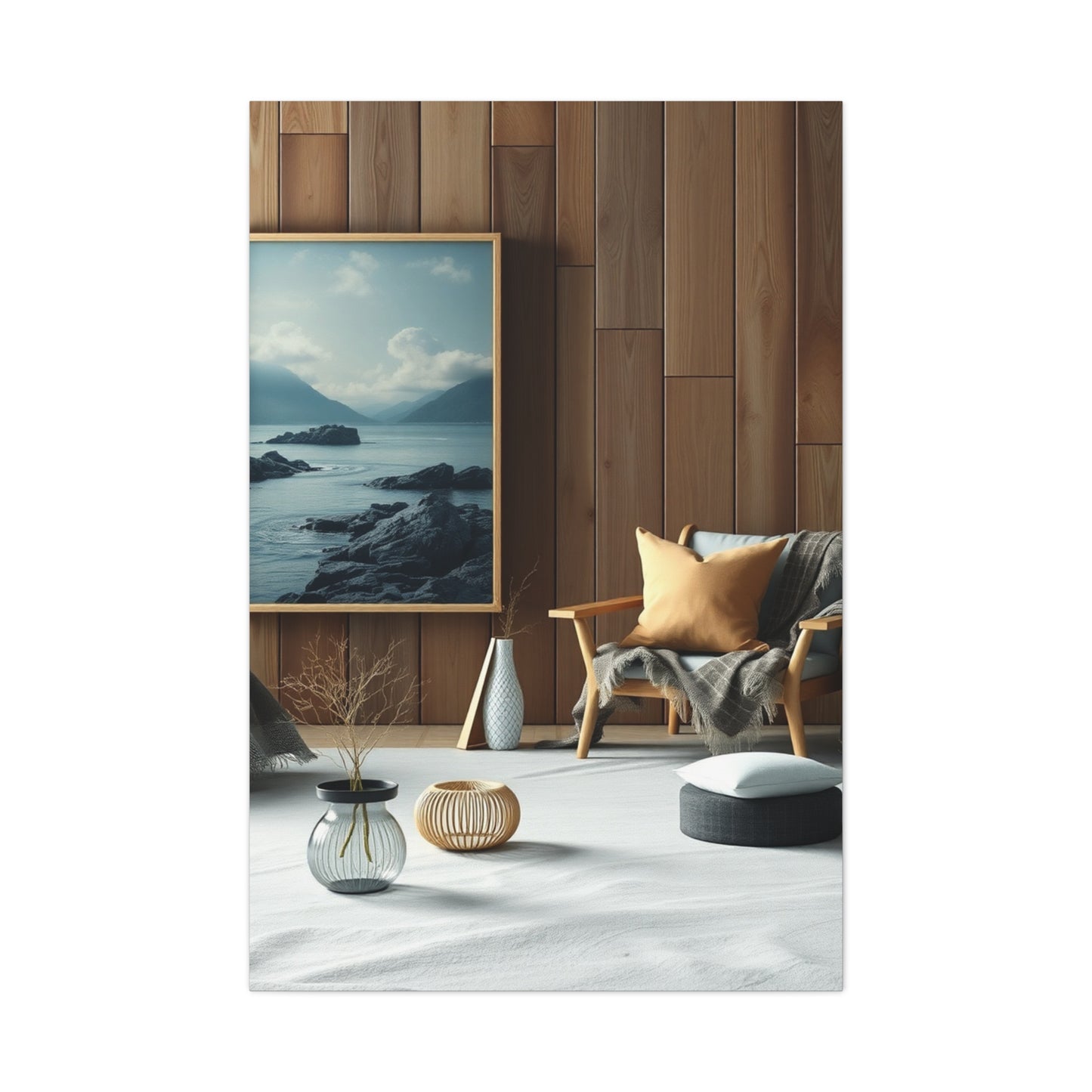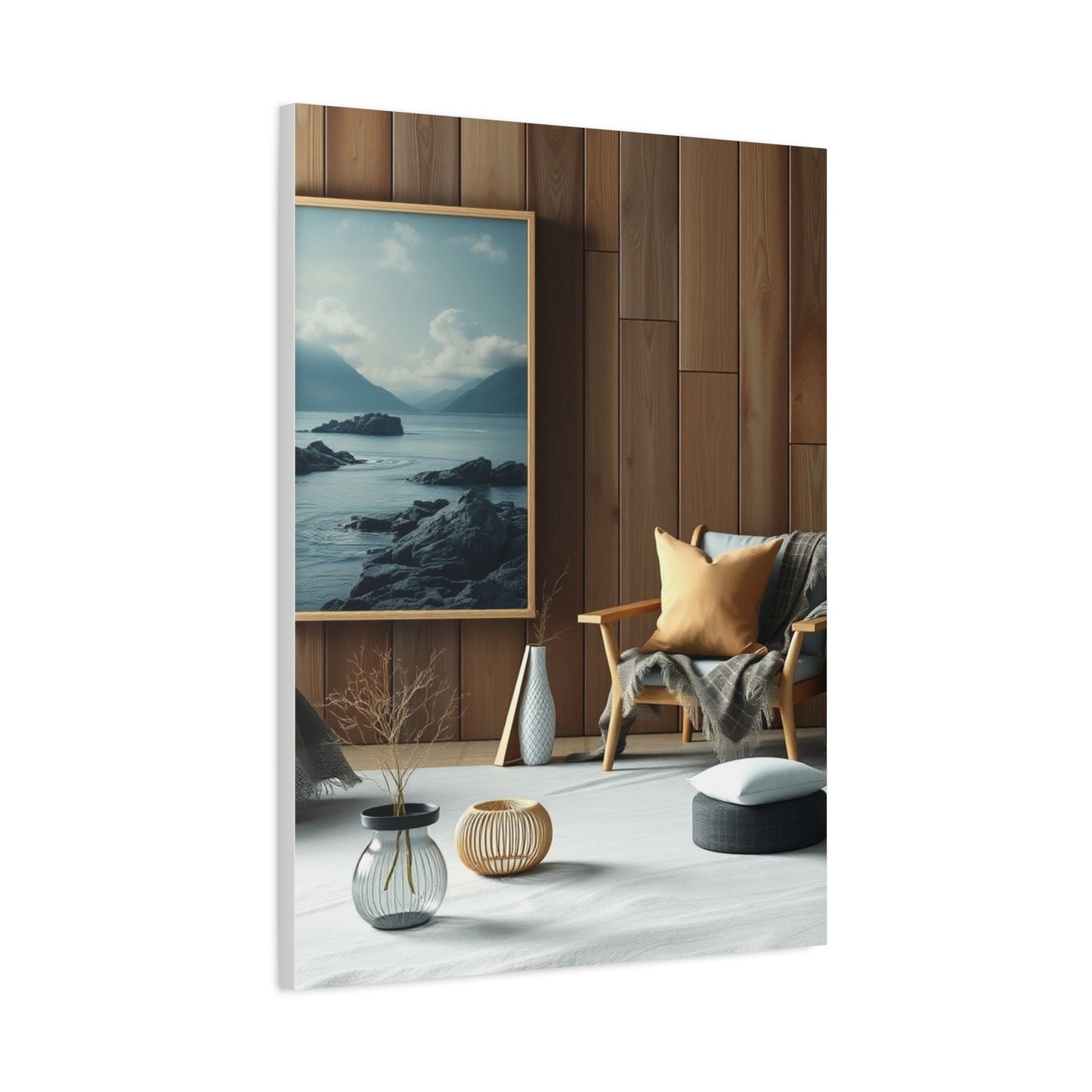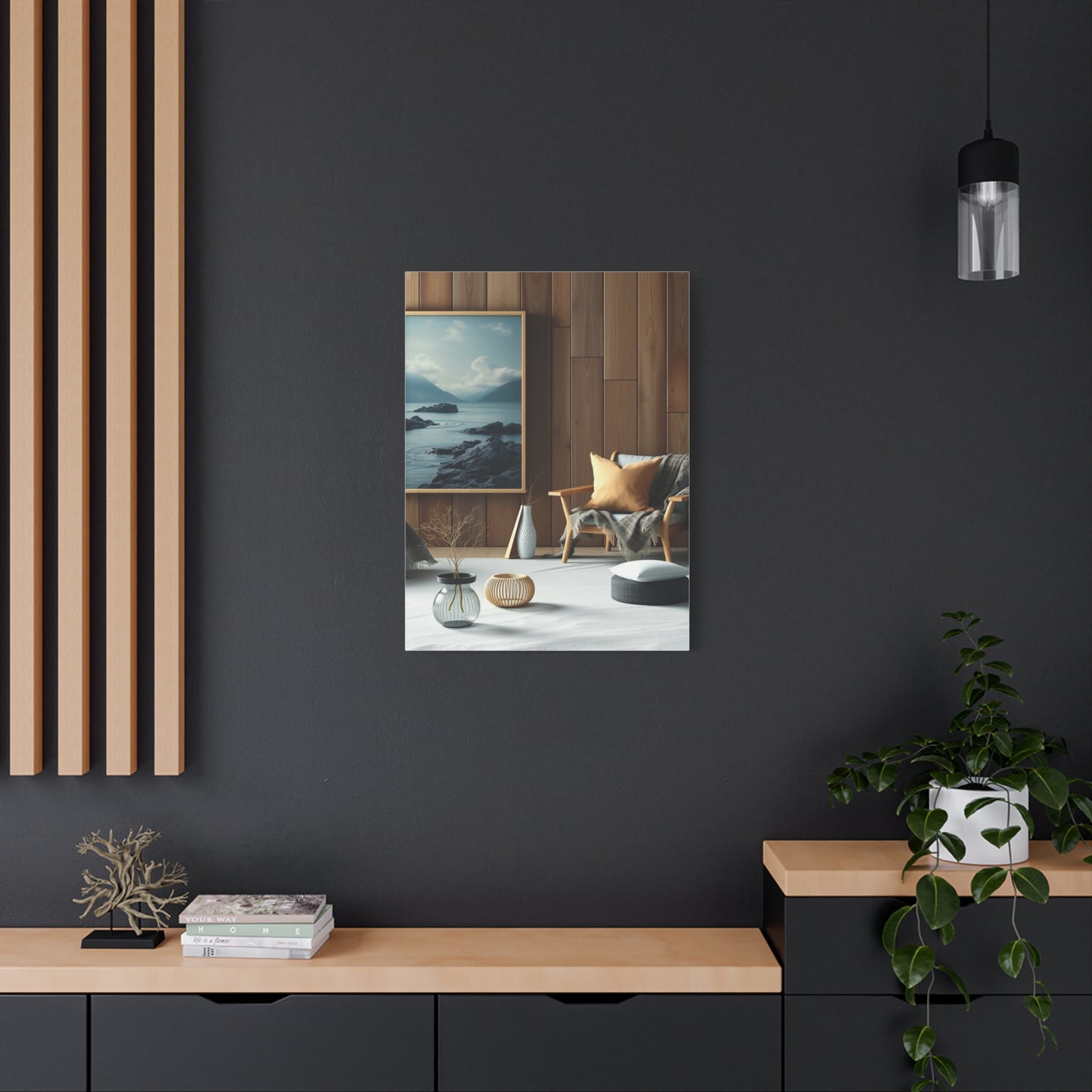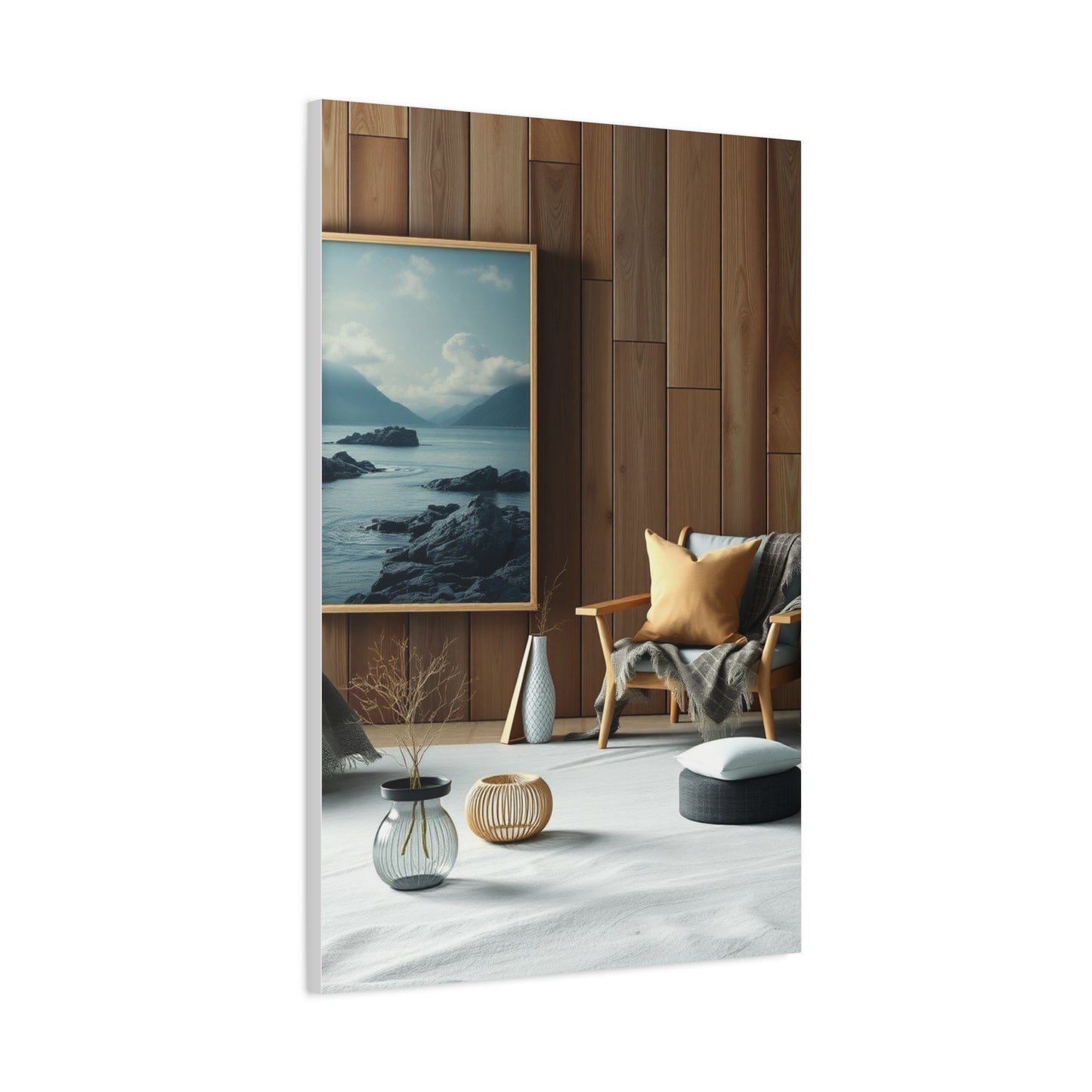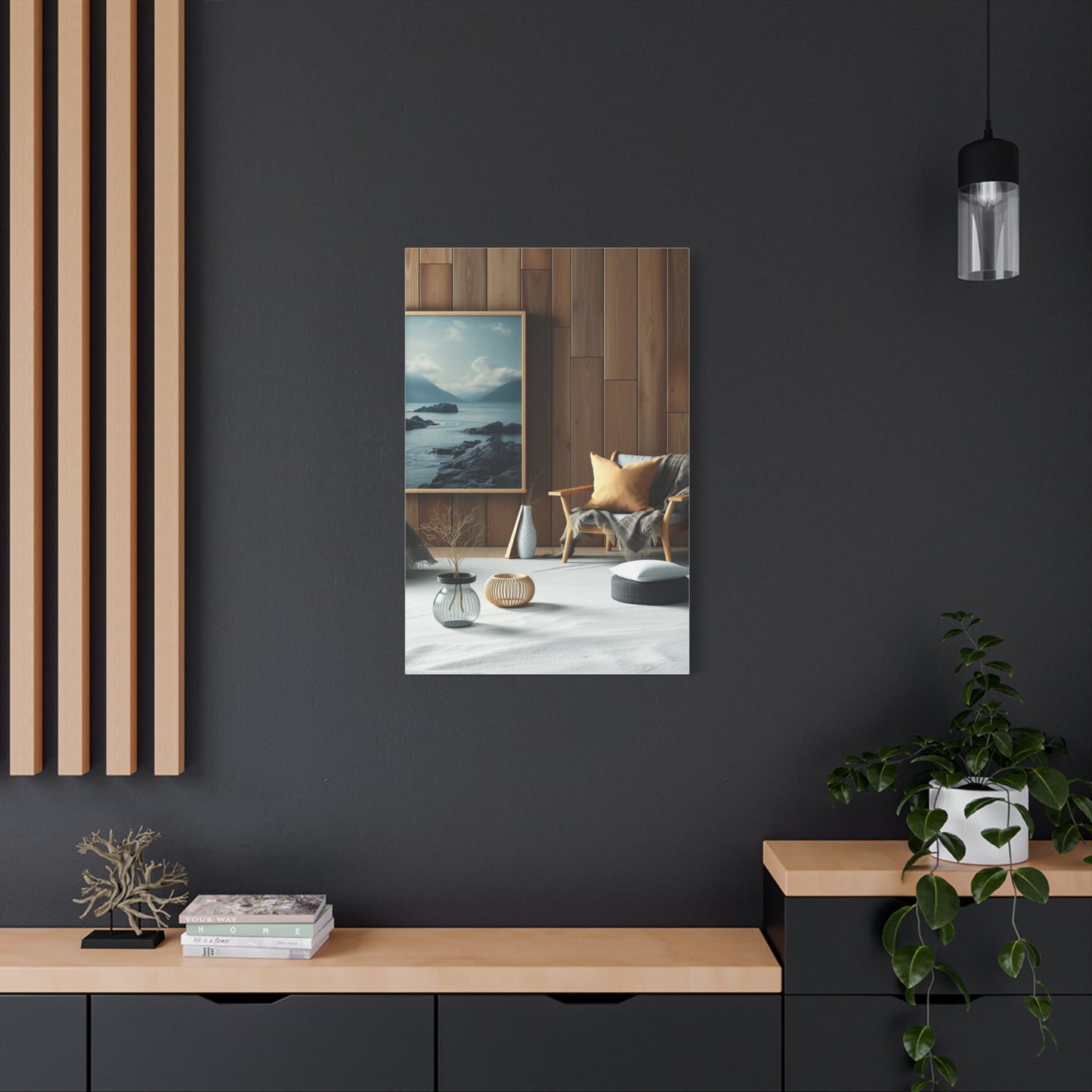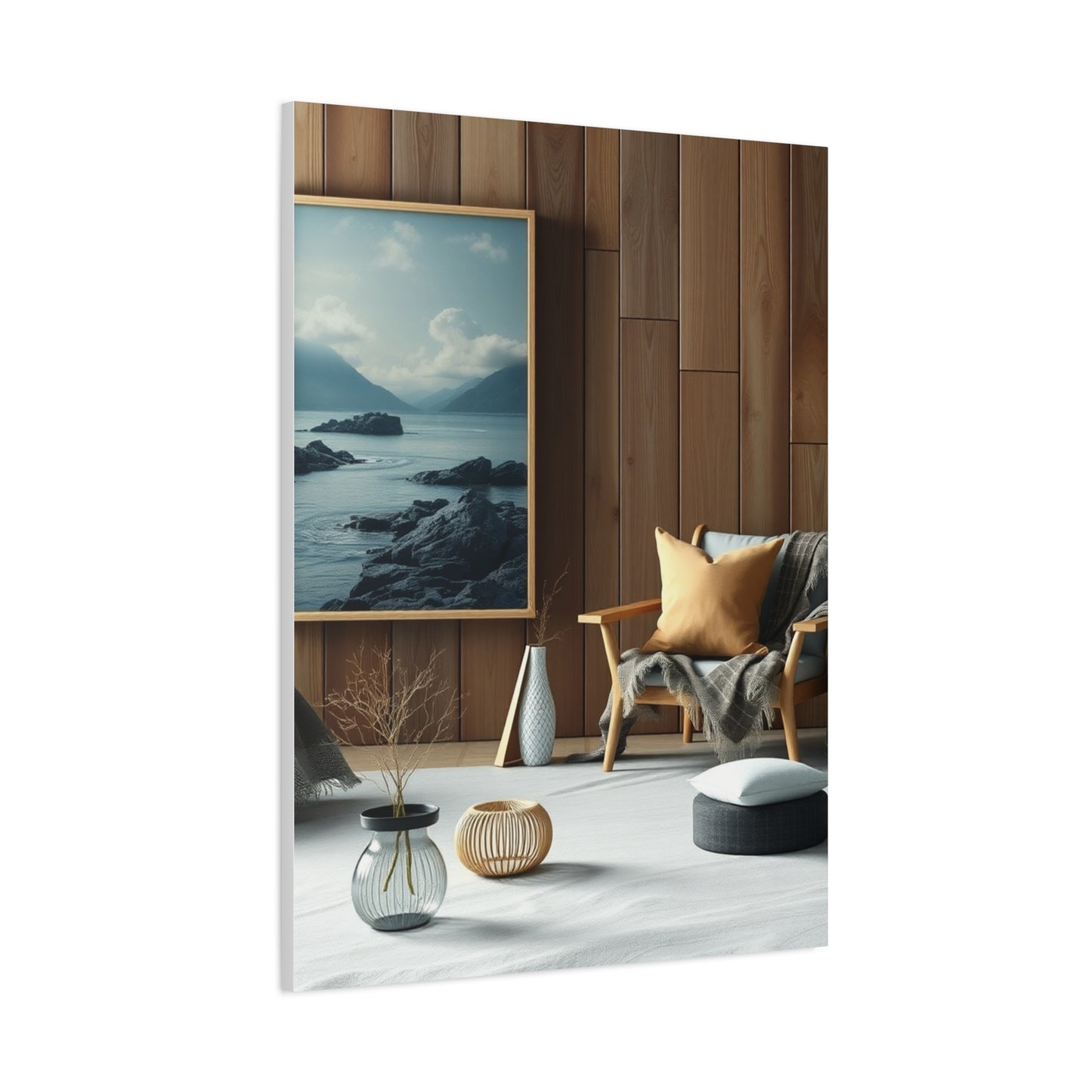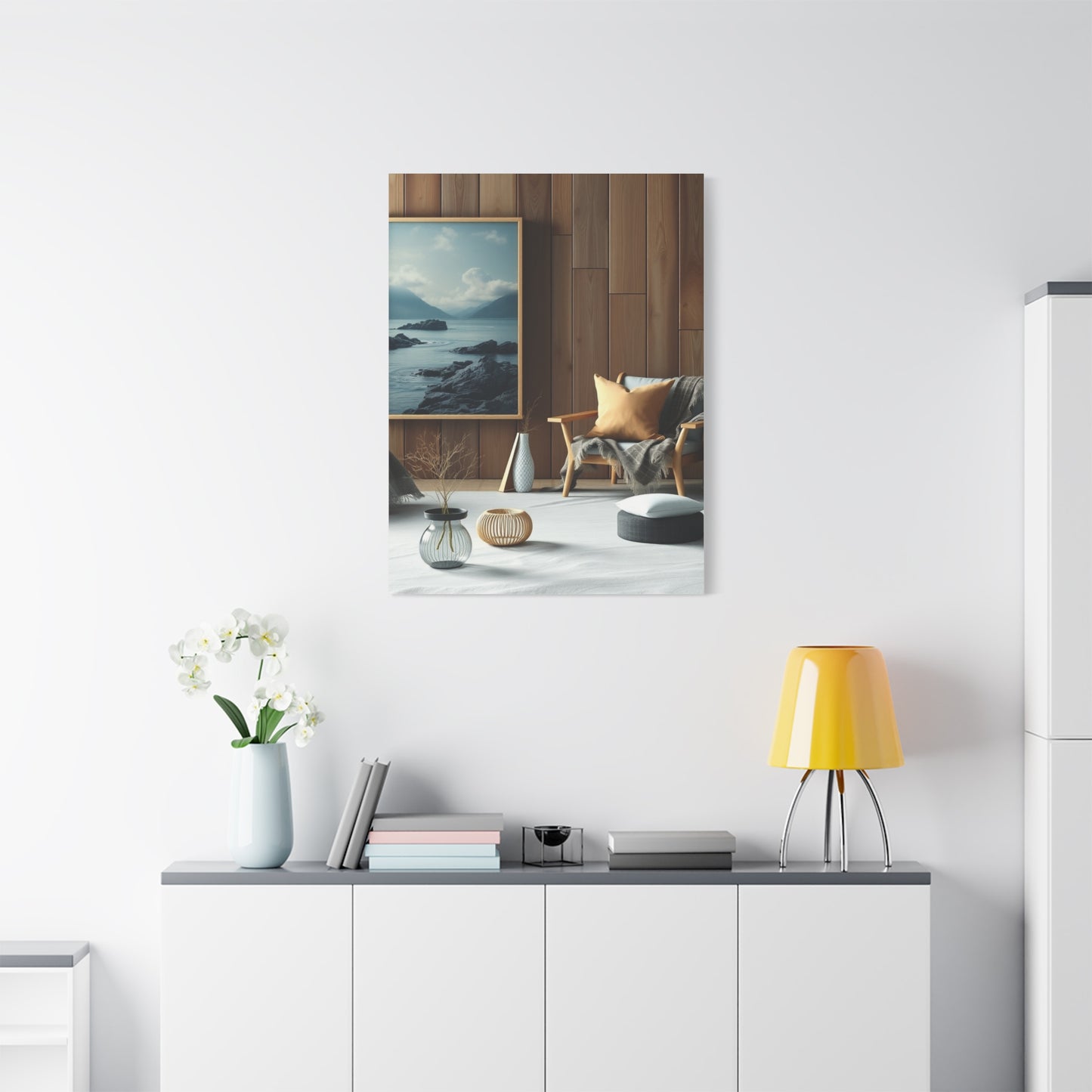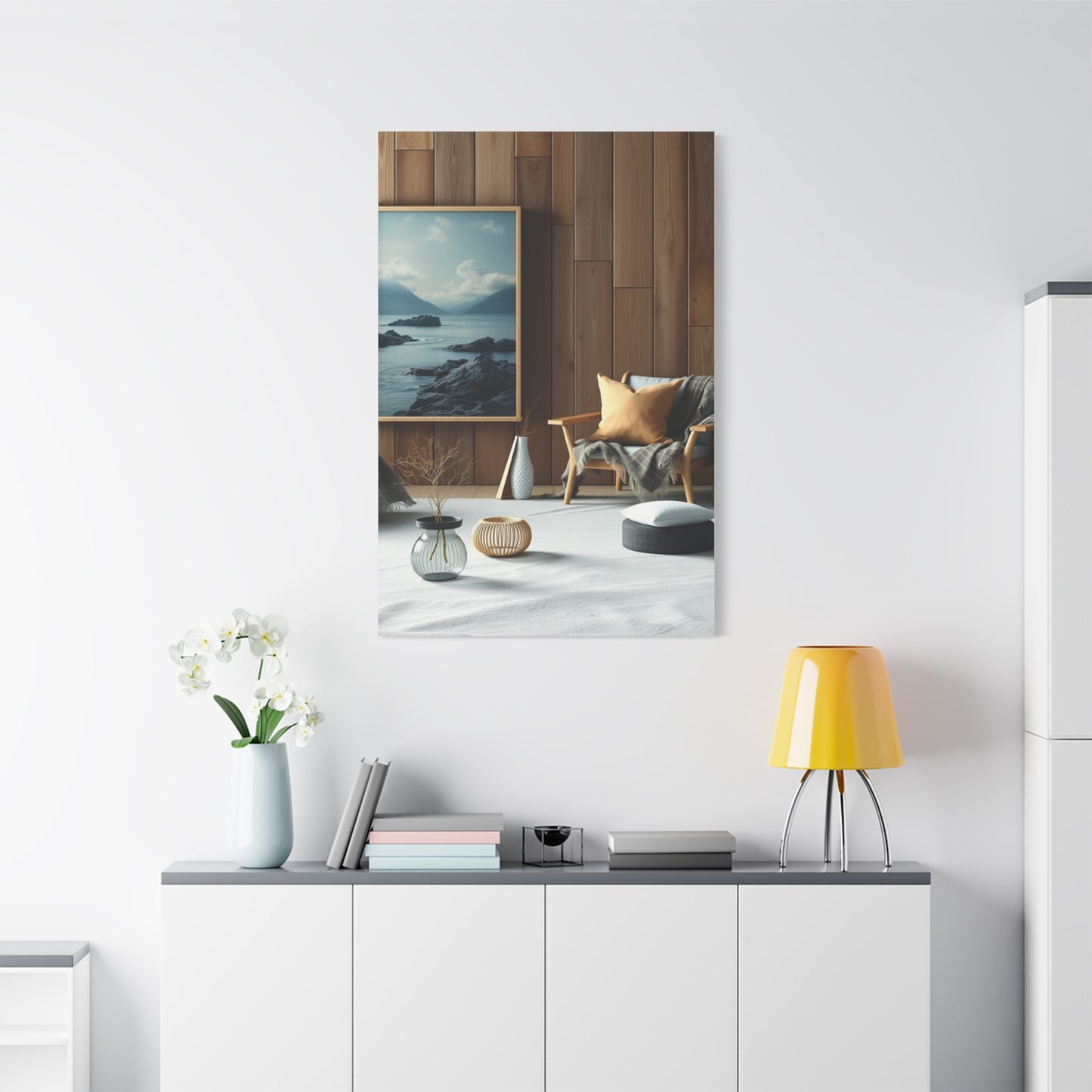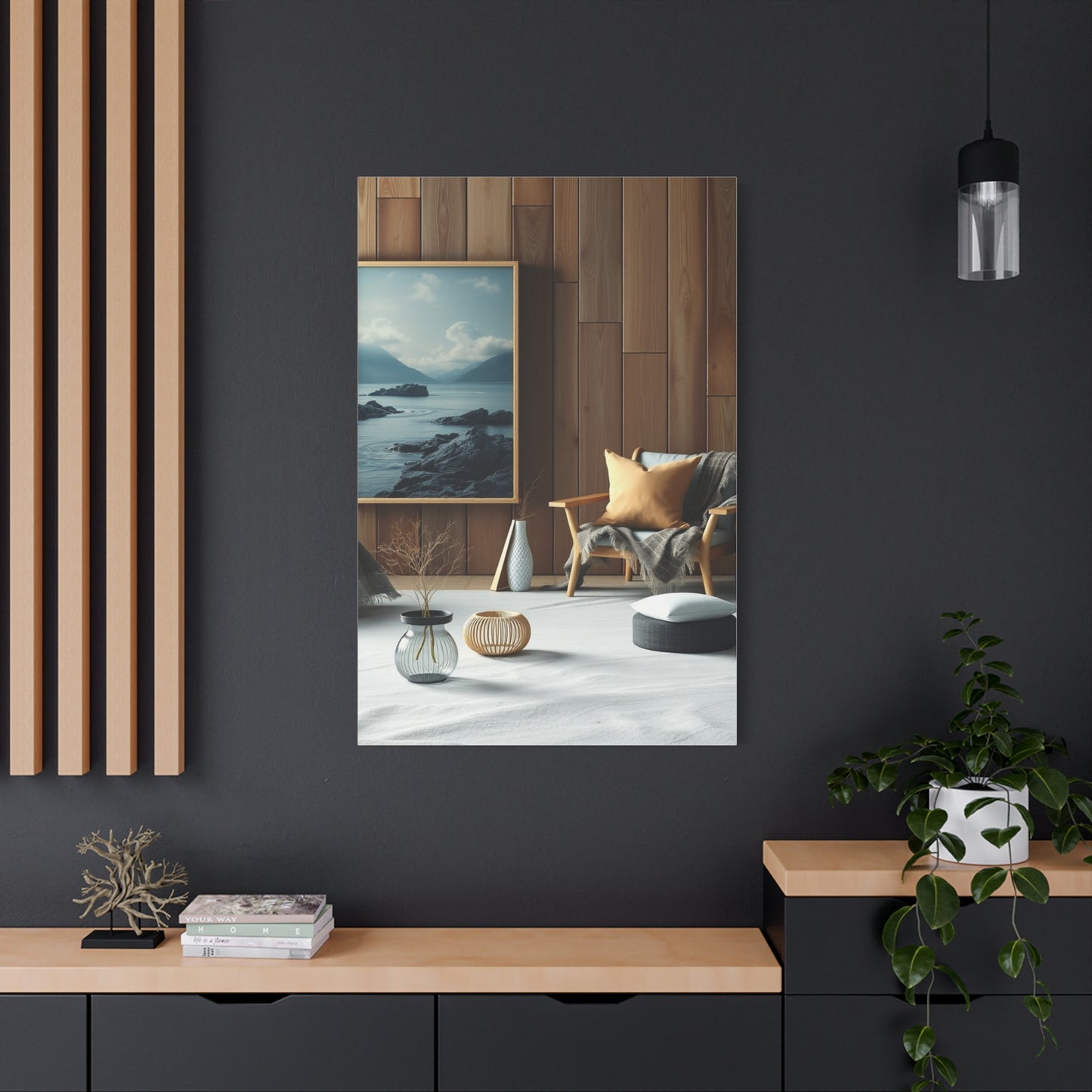Aurora Whisper Canvas Wall art: Capturing the Calm and Color of the Northern Lights
Transform your living spaces with the captivating beauty of celestial-inspired wall decorations that bring the magic of polar night skies directly into your home. These stunning visual pieces capture the essence of natural light phenomena, creating atmospheric environments that resonate with tranquility and wonder. Whether you are decorating a contemporary apartment, a cozy family room, or a minimalist office space, these artistic interpretations of atmospheric luminescence offer endless possibilities for interior enhancement.
The allure of these decorative pieces lies in their ability to transport viewers to remote landscapes where dancing lights paint the darkness with ribbons of color. Each carefully crafted design serves as a window to the extraordinary natural spectacle that occurs in polar regions, bringing a sense of peaceful escapism to everyday environments. These artistic representations combine scientific wonder with aesthetic appeal, making them perfect conversation starters and focal points in any room setting.
Modern homeowners increasingly seek meaningful decorations that reflect their connection to nature and the cosmos. These canvas interpretations fulfill that desire by offering accessible glimpses into one of Earth's most mesmerizing natural phenomena. The popularity of such decorative elements continues to grow as people recognize the psychological benefits of surrounding themselves with imagery that evokes calmness, inspiration, and connection to something greater than everyday concerns.
Capturing Natural Light Phenomena Through Artistic Expression
The process of translating atmospheric light displays into visual art requires exceptional skill and understanding of both natural science and artistic principles. Artists who specialize in these creations study the actual phenomenon extensively, often traveling to polar regions to witness the spectacle firsthand. This dedication to authenticity ensures that each piece carries the genuine essence of the experience, rather than merely depicting generic colorful patterns against dark backgrounds.
Photographic interpretations capture specific moments in time when conditions align perfectly to create spectacular displays. These images preserve the exact configurations of light, color intensity, and environmental context that existed during those fleeting moments. The technical expertise required to photograph these events includes understanding long exposure techniques, managing extreme cold weather conditions, and anticipating the unpredictable nature of geomagnetic activity that produces these visual phenomena.
Digital artists bring another dimension to these representations by enhancing natural imagery or creating entirely original interpretations inspired by the phenomenon. Through careful manipulation of colors, contrast, and composition, they craft scenes that may be more vivid or dramatic than what typically appears in nature, yet still maintain the spiritual essence that makes these displays so captivating. This artistic license allows for creations that fit specific color schemes or aesthetic preferences while honoring the natural inspiration.
Traditional painting techniques also play a significant role in creating these decorative pieces. Skilled painters use oils, acrylics, or watercolors to interpret the dancing lights, often adding personal artistic vision that transforms scientific observation into emotional expression. These handcrafted pieces carry unique character and depth that cannot be replicated through photography alone, offering collectors something truly distinctive for their spaces.
Different Styles and Artistic Approaches
Contemporary interpretations of polar light phenomena range from photorealistic representations to abstract expressions that capture emotional rather than literal accuracy. Photorealistic styles appeal to those who appreciate the documentary aspect of these natural wonders, preferring images that accurately reflect what one might witness during actual viewing experiences in northern latitudes. These pieces work exceptionally well in modern spaces where clean lines and authentic imagery complement minimalist design philosophies.
Abstract interpretations take creative freedom with color palettes, shapes, and compositions, focusing on the feeling and energy of the phenomenon rather than precise replication. These artistic approaches might exaggerate certain colors, simplify forms, or introduce elements not found in nature to create more dramatic or stylized presentations. Such pieces suit eclectic interiors where bold artistic statements are welcomed and where the decorative elements serve as primary focal points rather than subtle accents.
Impressionistic styles bridge the gap between realism and abstraction, suggesting the essence of the phenomenon through loose brushwork and atmospheric color application. These pieces evoke the dreamlike quality of witnessing these lights, capturing the emotional impact rather than technical details. They work beautifully in spaces with softer, more romantic design sensibilities where subtlety and suggestion are valued over explicit representation.
Minimalist interpretations reduce the phenomenon to its essential elements, often featuring simplified color gradients and clean compositions that emphasize tranquility and space. These designs appeal to those who appreciate understated elegance and who wish to introduce the concept of polar lights without overwhelming their carefully curated interiors. Such pieces demonstrate that impactful decoration need not be complex or busy to create meaningful atmospheric effects.
Selecting Appropriate Dimensions for Various Room Sizes
Determining the right size for celestial-inspired wall decorations requires careful consideration of room dimensions, wall space availability, and viewing distances. Large-scale pieces spanning several feet in width create dramatic focal points in spacious living rooms, open-concept areas, or master bedrooms where they can be appreciated from various distances. These substantial installations command attention and set the tone for entire rooms, making them ideal anchors for design schemes built around celestial or natural themes.
Medium-sized pieces offer versatility for diverse applications, working well above sofas, beds, or in dining areas where they contribute visual interest without overwhelming the space. These dimensions typically range from thirty to fifty inches in width, providing sufficient impact to be noticed while remaining proportional to surrounding furniture and architectural features. They represent excellent choices for those who want meaningful decoration without committing to the drama of oversized installations.
Smaller formats suit intimate spaces like home offices, bathrooms, hallways, or as part of gallery wall arrangements where multiple pieces create collective impact. These compact options allow for creative clustering and can be mixed with other complementary artworks to build personalized collections that tell visual stories. Despite their modest dimensions, quality reproductions of these phenomena maintain impressive detail and color accuracy that rewards close viewing.
Multi-panel installations, where single images are divided across multiple canvases, create contemporary presentations that add architectural interest to walls. These triptychs or larger configurations introduce dynamic visual rhythm and allow for creative spacing that can emphasize horizontal expansiveness or vertical drama depending on arrangement. Such approaches suit modern and contemporary interiors where innovative presentation methods complement progressive design philosophies.
Emotional Impact in Interior Spaces
The chromatic characteristics of polar light imagery significantly influence the psychological atmosphere of rooms where they are displayed. Green-dominated compositions, reflecting the most common natural occurrence of these phenomena, introduce calming, balanced energy associated with nature and growth. These tones work exceptionally well in bedrooms, meditation spaces, or areas designated for relaxation and stress reduction, as green wavelengths have documented effects on promoting tranquility and reducing anxiety.
Purple and violet interpretations add mysterious, spiritual dimensions to interiors, tapping into associations with creativity, imagination, and higher consciousness. These rarer color variations, which occur during periods of intense solar activity, create spaces that feel more exotic and otherworldly. They suit creative studios, reading nooks, or personal spaces where introspection and imagination are encouraged and valued.
Blue-tinted representations evoke coolness, serenity, and connection to both sky and water elements, making them ideal for creating peaceful environments that promote clear thinking and communication. The psychological effects of blue include reduced heart rate and lowered blood pressure, making these interpretations particularly valuable in high-stress environments or spaces where calm focus is desired. Home offices, study areas, and bedrooms benefit especially from these cooler chromatic approaches.
Pink and red variations, though less common in nature, introduce warmth, passion, and energy when they do appear in artistic interpretations. These warmer tones can counterbalance cool color schemes in rooms or add unexpected vibrancy to neutral palettes. They work well in social spaces where you want to encourage conversation and engagement, or in areas where you wish to make bold design statements that challenge conventional expectations.
Integrating Celestial Themes into Various Interior Design Styles
Scandinavian design principles align naturally with polar light imagery, as these phenomena are integral to Nordic cultural identity and landscape experience. The clean lines, natural materials, and emphasis on connection to nature that characterize this style create perfect contexts for these decorative elements. When paired with light woods, white walls, and minimalist furnishings, these artistic pieces become striking focal points that honor both aesthetic restraint and natural wonder.
Contemporary interiors benefit from the modern edge that abstract or stylized interpretations bring to spaces characterized by innovative materials, bold geometry, and artistic experimentation. These rooms can accommodate more dramatic or unconventional representations that push creative boundaries while maintaining the essential atmospheric quality that makes the imagery appealing. The combination of sleek furnishings and ethereal natural phenomena creates intriguing juxtapositions that define sophisticated contemporary living.
Traditional spaces gain unexpected dimension when celestial imagery introduces elements of mystery and natural wonder into environments typically dominated by historical references and classical proportions. When framed appropriately and scaled to match the room's formality, these pieces bridge past and present, suggesting that appreciation for natural beauty transcends temporal design trends. They work particularly well in traditional libraries, studies, or formal sitting rooms where they add contemporary relevance without disrupting established aesthetic frameworks.
Bohemian interiors embrace the free-spirited, worldly character that these natural phenomena represent, incorporating them into eclectic collections that celebrate global inspiration and artistic diversity. In these relaxed, layered spaces, celestial imagery contributes to the sense of wanderlust and connection to earth's wild places. Combined with textiles from various cultures, collected artifacts, and abundant plants, these pieces reinforce the bohemian celebration of natural beauty and authentic experience.
Canvas Quality and Longevity
Professional-grade canvas materials ensure that celestial imagery maintains its visual impact for years or decades with proper care. Museum-quality cotton or polyester blends provide stable foundations that resist warping, sagging, or degradation over time. The thread count and weave density of canvas directly affect how smoothly images reproduce and how well they resist environmental stresses. Higher-quality materials justify their premium costs through superior appearance and extended lifespans that protect your investment in meaningful decoration.
Archival printing techniques using pigment-based inks rather than dye-based alternatives ensure that colors remain vibrant and accurate despite exposure to ambient light and environmental conditions. Pigment inks bond more permanently with canvas fibers and demonstrate significantly better lightfastness ratings, meaning they resist fading when displayed in rooms with natural sunlight. This technical consideration becomes especially important for pieces featuring the subtle color gradations characteristic of polar light phenomena, where fading could dramatically alter the intended aesthetic effect.
Protective coatings applied to finished canvases shield artwork from dust, moisture, and minor physical contact that occurs in normal household environments. These treatments, typically acrylic-based sealants, create invisible barriers that allow for gentle cleaning without risking damage to printed surfaces. The application of such protective layers represents a final quality control step that distinguishes professional productions from basic consumer-grade offerings.
Stretcher bar construction affects both the visual presentation and structural integrity of canvas pieces. Premium wooden frames use kiln-dried lumber that resists warping and splitting, with corner joints reinforced to maintain perfect tension throughout the canvas lifetime. The depth of stretcher bars influences the three-dimensional quality of the installation, with deeper profiles creating more dramatic shadow effects and greater physical presence on walls. Gallery-wrap techniques, where images extend around frame edges, eliminate the need for separate framing and create clean, contemporary presentations.
Placement Strategies for Maximum Visual Impact
Above seating areas represents one of the most common and effective locations for celestial-inspired canvases, where they occupy prime visual real estate without interfering with functional room elements. When positioned over sofas or beds, these pieces should typically be centered horizontally and hung so their vertical midpoint aligns roughly with average eye level when standing. This positioning creates balanced compositions that feel neither too high nor too low, allowing comfortable viewing from both seated and standing positions.
As bedroom focal points behind bed headboards, these atmospheric images set contemplative moods perfect for spaces dedicated to rest and restoration. The horizontal format of many polar light compositions naturally complements the proportions of beds and emphasizes the room's width. Positioning these pieces in bedrooms takes advantage of the psychological associations between the imagery and qualities like tranquility, mystery, and natural beauty that enhance sleep environments and personal sanctuaries.
In dining areas, celestial imagery provides conversation-worthy backdrops for social gatherings without competing with the primary function of the space. These installations work particularly well on walls opposite main seating areas, where diners can appreciate them throughout meals. The atmospheric quality of polar light scenes adds sophistication to dining experiences while maintaining the subtle presence that allows food, company, and conversation to remain central focuses.
Hallways and transitional spaces offer often-underutilized opportunities for meaningful decoration that transforms utilitarian areas into experiential passages. Celestial canvases in these locations create visual interest that draws movement through spaces while establishing thematic connections between rooms. The narrow proportions of hallways actually suit many interpretations of dancing lights, which often emphasize vertical or horizontal movement across frames.
Creating Gallery Walls with Celestial Themes
Curating collections of related images allows for storytelling through visual progression, where multiple pieces work together to create more complex narratives than single installations permit. You might arrange various color interpretations to show the range of appearances these phenomena can take, or combine different perspectives and scales to build comprehensive impressions of the experience. The key to successful gallery arrangements lies in identifying unifying elements, whether color palettes, framing styles, or compositional approaches that create coherence despite variety.
Balancing sizes and orientations within gallery walls requires attention to visual weight distribution and negative space management. Larger pieces anchor arrangements while smaller elements fill supporting roles, with the overall composition achieving equilibrium through strategic placement. Mixing horizontal and vertical orientations adds dynamic interest and prevents monotonous grid patterns that can feel static or institutional. Asymmetrical arrangements often create more visually engaging results than perfectly symmetrical layouts, introducing organic unpredictability that mirrors the natural phenomenon itself.
Spacing considerations significantly impact how individual pieces relate to each other and function as unified installations. Generally, maintaining consistent gaps between frames, typically ranging from two to four inches, creates professional appearances that allow each piece to maintain its identity while contributing to the collective whole. Tighter spacing emphasizes connections between images, while wider gaps preserve more individuality. The background wall color influences optimal spacing, with darker walls typically accommodating closer arrangements than lighter backgrounds.
Incorporating complementary decorative elements like mirrors, lighting fixtures, or three-dimensional objects adds depth and variety to celestial-themed gallery walls. Small shelves displaying crystals, books about astronomy or natural phenomena, or travel mementos from polar regions enhance thematic coherence while breaking up two-dimensional uniformity. These mixed-media approaches create more personalized, collected appearances that reflect individual interests and experiences beyond pure visual aesthetics.
Lighting Techniques to Enhance Atmospheric Qualities
Natural light considerations affect both the preservation and presentation of canvas artwork, requiring thoughtful positioning relative to windows and skylights. While moderate indirect sunlight can illuminate pieces beautifully, direct sustained exposure accelerates fading and degradation even in archival-quality prints. South-facing walls in northern hemisphere locations receive the most intense sunlight, making them riskier choices for valuable artwork. East and west walls receive strong but time-limited direct light during morning and evening hours respectively, while north-facing walls receive consistent indirect illumination ideal for art display.
Artificial lighting installations specifically designed for artwork can dramatically enhance the visual impact of celestial canvases while protecting them from damage. Picture lights mounted directly to frames or walls create focused illumination that brings out color depth and detail while minimizing light spillage to surrounding areas. These fixtures typically use LED technology offering excellent color rendering and minimal heat generation, both important factors for artwork preservation. The warm or cool color temperature of lighting should be chosen to complement the predominant tones in the artwork itself.
Ambient room lighting establishes overall visibility levels and influences how artwork integrates with its surroundings throughout different times of day. Recessed ceiling fixtures, track lighting, or decorative lamps contribute to general illumination that allows artwork to remain visible without requiring dedicated lighting. Dimmer controls offer flexibility to adjust lighting levels according to activities, times of day, or desired moods, allowing you to emphasize or subdue artwork as circumstances warrant.
Accent lighting using spotlights or wall-washing techniques can transform celestial canvases into evening focal points that anchor room atmospheres after darkness falls. Strategic illumination creates drama and emphasis that elevate artwork from background decoration to starring attraction. When working with imagery that depicts nighttime phenomena, this layered lighting approach creates meta-textual resonance, using artificial light to celebrate natural light in ways that feel both appropriate and sophisticated.
Long-Term Preservation
Regular dusting using soft, dry cloths or specialized art-cleaning brushes prevents accumulation of particulates that can become embedded in canvas textures over time. Gentle sweeping motions in single directions work better than circular rubbing, which can redistribute dust rather than removing it. Establishing consistent cleaning schedules, perhaps monthly or quarterly depending on environmental conditions, maintains optimal appearance while preventing buildup that becomes increasingly difficult to address if neglected.
Humidity control protects canvas materials from expansion and contraction cycles that lead to warping or loosening over stretched frames. Ideal relative humidity levels for art preservation range between forty and sixty percent, avoiding both the excessive dryness that makes materials brittle and the high moisture content that encourages mold growth. In regions with extreme seasonal humidity variations, climate control systems or localized humidifiers and dehumidifiers help maintain stable conditions that extend artwork lifespans.
Avoiding direct contact with canvas surfaces prevents oils from skin, accidental scratches, or pressure marks that permanently alter appearances. When moving or adjusting artwork, handling frames rather than canvas areas protects vulnerable printed surfaces. Teaching household members, especially children, about appropriate respect for artwork establishes cultural norms around decoration that protect investments while cultivating aesthetic appreciation.
Periodic professional assessment and conservation treatments may be warranted for particularly valuable pieces or those showing signs of deterioration despite careful maintenance. Art conservators can address issues like canvas loosening, minor tears, or coating failures that exceed the scope of routine home care. Building relationships with local art professionals provides resources for emergencies and long-term stewardship of meaningful collections.
Seasonal Decorating and Rotating Displays
Winter months naturally align with celestial polar light themes, making this season ideal for featuring these decorations prominently in primary living spaces. The long dark evenings characteristic of winter create atmospheric contexts where imagery of night sky phenomena feels especially relevant and comforting. Introducing these pieces at the onset of cold weather can mark seasonal transitions while addressing the psychological challenges of reduced daylight hours through beautiful reminders of natural winter wonders.
Summer rotations might temporarily relocate polar light canvases to less prominent positions, replaced by artwork featuring warmer seasons, brighter palettes, or daytime natural scenes. This approach keeps interiors fresh and responsive to changing seasons while protecting artwork from the intense summer sun that penetrates deeper into rooms. Seasonal rotation also extends the psychological impact of favorite pieces by preventing visual habituation that makes us overlook even beautiful things we see constantly.
Holiday decorating presents opportunities to temporarily integrate celestial canvases into festive displays, particularly during winter celebrations where the imagery complements seasonal themes. Surrounding these pieces with evergreen garlands, subtle string lighting, or winter botanical elements creates cohesive seasonal vignettes that honor both artistic quality and festive spirit. The key lies in maintaining focus on the artwork itself rather than overwhelming it with excessive ornamentation.
Storage considerations for rotated artwork require protective measures against physical damage, dust accumulation, and environmental stresses during periods of non-display. Wrapping canvases in acid-free paper or breathable fabric protects surfaces while allowing air circulation that prevents moisture accumulation. Storing pieces vertically or flat rather than leaning them at angles prevents warping and reduces stress on corner joints. Climate-controlled storage areas maintain the stable conditions necessary for long-term preservation.
Budget Considerations and Value Assessment
Entry-level options provide access to celestial-inspired decoration for those working with modest budgets or seeking temporary solutions for rental properties. These pieces typically feature digital prints on basic canvas materials with simple frame construction adequate for near-term use. While they may not offer the longevity or visual refinement of premium alternatives, they fulfill aesthetic functions and allow experimentation with styles and sizes before committing to more significant investments.
Mid-range selections balance quality and affordability, offering archival printing processes, better canvas materials, and solid construction that justifies moderate price points. These pieces suit the majority of homeowners seeking durable decoration that maintains appearance for many years with reasonable care. The sweet spot for many buyers, mid-range options provide most of the benefits of premium products without the costs associated with limited editions or original artwork.
Premium and investment-grade pieces justify their elevated costs through exceptional materials, printing technologies, limited availability, or artist recognition. Original paintings, numbered limited edition prints, or works by established photographers command prices reflecting both material quality and collectible status. For serious collectors or those furnishing luxury properties, these pieces offer potential appreciation alongside immediate decorative value, functioning as both art and investment.
Custom commission opportunities allow for unique pieces tailored to specific requirements regarding size, color palette, composition, or artistic interpretation. Working directly with photographers or artists to create personalized versions of celestial phenomena ensures perfect alignment with interior design visions and individual preferences. While custom work typically commands premium pricing, the resulting pieces carry unique value as one-of-a-kind creations designed specifically for your spaces and sensibilities.
Natural Phenomena in Living Spaces
Stress reduction represents one of the most significant benefits of surrounding yourself with imagery of serene natural phenomena. Research into environmental psychology demonstrates that viewing nature scenes, even through artistic representations, activates parasympathetic nervous system responses that counter stress reactions. The vast scales and gentle movements suggested by polar light imagery provide mental escape from immediate concerns, offering brief psychological vacations that restore emotional equilibrium.
Enhanced creativity and imagination flourish in environments that include inspiring visual elements drawing attention beyond mundane concerns. Celestial imagery reminds us of mysteries beyond complete human understanding, stimulating curiosity and wonder that fuel creative thinking. Home offices, studios, or any spaces designated for intellectual or artistic pursuits benefit particularly from decoration that encourages expansive thinking and novel perspectives.
Improved sleep quality may result from bedroom decoration featuring calming chromatic palettes and associations with nighttime natural beauty. The psychological preparation for rest begins during waking hours spent in bedroom environments, where visual elements contribute to developing mental associations between spaces and activities. Imagery suggesting tranquil night skies reinforces connections between the room and rest, potentially facilitating easier transitions into sleep states.
Spiritual connection and sense of wonder about existence receive regular reinforcement from artwork depicting extraordinary natural phenomena. For those who find meaning in contemplating humanity's place within larger cosmic contexts, these decorative elements serve as daily reminders of perspectives that transcend everyday concerns. This function becomes increasingly valuable in contemporary life, where technological immersion and urban environments can distance us from direct experiences of natural grandeur.
Complementary Décor Elements and Design Pairings
Textile selections in colors echoing the canvas artwork create cohesive design schemes that feel intentional and sophisticated. Throw pillows, blankets, or window treatments incorporating greens, purples, blues, or other tones from the celestial imagery establish visual harmony throughout spaces. These supporting elements need not match artwork precisely; instead, they should share chromatic relationships that create subtle resonances noticed subconsciously even when not explicitly recognized.
Furniture choices in natural materials like wood, stone, or leather ground ethereal celestial imagery with organic textures that prevent spaces from feeling too abstract or disconnected from tangible reality. The juxtaposition of sturdy, touchable furnishings with atmospheric artwork creates balanced environments that satisfy both physical comfort needs and aesthetic aspirations. This approach works particularly well in contemporary spaces where mixing material categories produces dynamic interest.
Metallic accents in silver, copper, or brushed gold finishes echo the luminous quality of polar light phenomena while adding sophisticated shimmer to room palettes. These elements might appear in light fixtures, decorative objects, or furniture hardware, creating subtle connections to the artwork's ethereal glow. The key lies in restraint, using metallic touches as highlights rather than dominant features that might compete with canvas focal points.
Plant life introduces living natural elements that reinforce the connection to earth and growing things suggested by celestial imagery. Both dramatic large-scale plants and smaller collections of succulents or air plants work depending on available space and maintenance preferences. The organic forms and colors of botanical elements provide visual balance to the geometric precision of framed canvas art while enhancing the natural theme underlying the entire design concept.
Cultural Significance and Storytelling Through Décor
Indigenous perspectives on polar light phenomena add depth and meaning to decoration choices when approached with appropriate respect and understanding. Many northern cultures have rich traditions of stories, beliefs, and relationships with these natural displays, viewing them as spiritual manifestations, ancestors, or messages from other realms. Learning about and honoring these cultural perspectives transforms decoration from mere aesthetics into opportunities for education and cross-cultural appreciation.
Scientific understanding of the geophysical processes creating these phenomena provides another narrative layer that appeals to those fascinated by how the universe works. The collision of solar wind particles with atmospheric gases, guided by Earth's magnetic field into polar regions, represents an elegant demonstration of invisible forces shaping visible reality. Displaying artwork that captures these events can prompt conversations about science, space weather, and planetary dynamics that enrich social interactions.
Personal travel memories and aspirations connect with celestial imagery for those who have witnessed or dream of witnessing these phenomena firsthand. For travelers returning from polar adventures, these decorative pieces serve as tangible reminders of transformative experiences and extraordinary moments in specific times and places. For others, they represent bucket list aspirations, keeping travel dreams visible and present in daily awareness as motivational inspiration.
Artistic expression and creative vision demonstrated in interpretations of natural phenomena celebrate human capacity to translate experience into shareable forms. Each piece represents an artist's unique perspective and technical skill applied to universal subject matter, creating bridges between individual vision and collective appreciation. Collecting and displaying these works supports creative communities while enriching personal environments with the fruits of artistic dedication.
Environmental Considerations and Sustainable Choices
Eco-conscious materials including organic cotton canvas, water-based inks, and sustainably sourced wooden stretcher frames appeal to environmentally aware consumers. The art production industry increasingly recognizes demand for sustainable practices that minimize environmental impact throughout manufacturing processes. Seeking out producers who prioritize ecological responsibility aligns decoration choices with broader environmental values and supports market transformation toward sustainable practices.
Local production reduces transportation environmental costs while supporting regional artistic communities and economies. Purchasing artwork created by local photographers or artists eliminates shipping impacts while building connections within your geographic community. Many regions have thriving creative scenes producing excellent work that reduces the need to source decoration from distant locations, though obviously polar light imagery naturally originates in specific latitudes.
Longevity and durability represent perhaps the most significant environmental considerations in decoration choices. Selecting quality pieces designed for decades of use rather than trendy items requiring frequent replacement dramatically reduces overall consumption and waste generation. The most sustainable decoration proves to be that which remains relevant and functional for extended periods, transcending temporary style trends through timeless aesthetic appeal and solid construction.
Second-hand and vintage options offer sustainable alternatives to new purchases while potentially providing access to unique pieces no longer in production. Estate sales, consignment galleries, and online marketplaces increasingly stock quality artwork as collectors downsize or redecorate. These pre-owned pieces carry their own histories and character while eliminating the environmental costs associated with new production.
Digital Alternatives and Emerging Display Technologies
Digital frames and screens offer dynamic alternatives to traditional canvas, allowing rotation through collections of images or even animation suggesting the movement characteristic of actual polar light displays. These technological solutions appeal to those who value flexibility and variety over the static nature of traditional artwork. Advances in display technology produce increasingly sophisticated color accuracy and resolution that approaches photographic print quality while adding capabilities impossible with physical media.
Projection mapping techniques can transform entire walls into immersive displays featuring atmospheric phenomena, creating experiential environments that transcend traditional decoration. These theatrical approaches suit dedicated media rooms or entertainment spaces where technology plays central roles. The wow factor of projection displays comes with complexity and maintenance requirements that exceed those of conventional artwork, but the unique experiences they provide may justify the additional effort for technology enthusiasts.
Augmented reality applications overlay digital content onto physical spaces viewed through smartphone or tablet screens, potentially animating static canvas prints or adding informational layers about the depicted phenomena. While still emerging, these technologies hint at future possibilities for interactive artwork that blurs boundaries between physical and digital experiences. Early adopters can experiment with these platforms while traditional canvas maintains its central role.
Virtual reality experiences transport users to polar landscapes where they witness these phenomena in simulated three-dimensional environments, offering immersion impossible through two-dimensional wall decoration. While VR systems currently require dedicated equipment and occupy different niches than passive wall art, they represent another approach to bringing extraordinary natural experiences into home environments. The future likely holds increasing integration of physical and digital decorative strategies as technologies evolve.
Gift-Giving and Sharing Atmospheric Beauty
Housewarming presents featuring celestial canvas artwork offer thoughtful alternatives to generic gifts, providing new homeowners with meaningful decoration reflecting natural wonder. The universal appeal of these phenomena transcends specific taste profiles, making such gifts relatively safe choices while still carrying significance beyond purely functional items. Including information about the depicted locations or scientific background adds educational dimension that enhances the gift's value.
Wedding and anniversary presents celebrating milestones with enduring artwork create lasting reminders of special occasions. Custom pieces can incorporate dates, locations, or other personalizations connecting the artwork to specific relationships or events. The permanence and daily visibility of wall decoration makes it particularly appropriate for marking significant life moments, keeping memories present in everyday awareness throughout years ahead.
Seasonal and holiday gifts featuring celestial themes work especially well during winter celebrations when the imagery aligns naturally with seasonal character. Presenting such pieces wrapped in complementary papers and accompanied by cards explaining the phenomenon or sharing relevant stories or memories adds layers of meaning that transform material objects into expressions of relationship and shared values.
Corporate gifts for clients or employees seeking sophisticated alternatives to generic promotional items benefit from the quality and thoughtfulness that artistic decoration represents. Branded subtly or left unmarked, these pieces demonstrate investment in meaningful recognition while providing practical value recipients can enjoy long after receiving them. The professional appearance of quality artwork suits business contexts while conveying appreciation more memorably than consumable gifts.
Addressing Common Concerns and Misconceptions
Concerns about trends and longevity sometimes prevent people from committing to celestial-themed decoration despite genuine attraction to the aesthetic. While specific interpretations or styles may cycle through popularity phases, the fundamental appeal of natural phenomena transcends temporary trends. These subjects have fascinated humanity throughout history and show no signs of losing relevance, making them safer long-term choices than many purely stylistic trends disconnected from enduring human interests.
Installation anxieties about damaging walls or hanging artwork incorrectly deter some from purchasing pieces they genuinely want. Modern hanging hardware makes installation straightforward even for those without extensive DIY experience, with options ranging from traditional picture hooks to adhesive strips that eliminate wall penetration entirely. Many retailers provide installation guides or services that remove uncertainty from the process.
Perceived expense sometimes creates barriers despite availability of options across various price points. Understanding that quality decoration represents long-term investment rather than disposable consumption helps frame costs appropriately. Breaking prices down to cost per year of expected use demonstrates that even moderately priced artwork becomes quite economical when maintained properly and enjoyed for decades.
Uncertainty about selecting appropriate pieces generates paralysis that prevents decorating decisions despite desire for change. Trusting personal attraction to specific images proves more reliable than attempting to objectively determine the single perfect choice. Most selections people genuinely like integrate successfully into their spaces, while overthinking leads to either paralysis or choices made for wrong reasons that never feel quite right despite technical appropriateness.
Professional Design Services and Expert Consultation
Interior designers bring professional expertise to decoration decisions, helping clients navigate options and make choices optimized for their specific spaces, lifestyles, and aesthetic goals. These professionals understand proportions, color theory, lighting, and stylistic coherence at levels that allow them to identify opportunities and avoid mistakes that might not be apparent to untrained eyes. For significant decoration projects or challenging spaces, professional guidance often proves worth the investment.
Art consultants specializing in residential collections help build cohesive artwork collections that reflect client interests while maintaining visual harmony throughout homes. These specialists understand market dynamics, artist backgrounds, and technical quality indicators that inform smart acquisition decisions. They can source pieces from galleries, artists, and other suppliers based on specific client requirements, handling logistics and negotiations as part of their services.
Virtual design services make professional expertise accessible even in remote locations or for those with limited budgets for in-person consultations. Many designers now offer online services where clients share photographs and measurements of spaces, receiving customized recommendations for artwork and other decorative elements. These remote services typically cost less than traditional in-person design while still providing professional insights that elevate final results.
DIY approaches supported by online resources, communities, and educational content empower motivated individuals to develop their own design skills and confidence. Countless websites, videos, and social media accounts share decoration advice, inspiration, and practical guidance that democratizes design knowledge previously held primarily by professionals. The learning curve requires time investment but results in enhanced ability to create personally meaningful spaces aligned with individual visions.
Celestial-Inspired Home Décor
Increased environmental awareness continues driving interest in nature-inspired decoration that reconnects people with natural phenomena increasingly absent from urban lifestyles. As more of humanity lives in cities with significant light pollution preventing clear views of night skies, artistic representations of celestial events gain importance as accessible substitutes for direct experience. This trend suggests sustained and growing demand for atmospheric imagery in residential interiors.
Technological integration through smart home systems may incorporate artwork into broader environmental control schemes where lighting, temperature, and displayed imagery coordinate to create comprehensive atmospheric experiences. Imagine systems that adjust both physical and digital artwork throughout seasons or in response to actual weather and astronomical events, creating responsive living environments that maintain awareness of natural cycles despite indoor lifestyles.
Personalization capabilities enabled by digital printing and custom production technologies allow increasing numbers of people to commission unique pieces tailored to exact specifications. As these services become more accessible and affordable, standard mass-produced decoration may give way to customized artwork that reflects individual experiences, preferences, and creative visions. This democratization of custom art production could fundamentally transform how people approach decorating their spaces.
Wellness-focused design increasingly recognizes the psychological and physiological impacts of environmental factors including visual elements, driving more intentional selection of decoration based on desired effects rather than purely aesthetic considerations. As research further establishes connections between environment and wellbeing, expect growing emphasis on evidence-based decoration choices that support health, happiness, and functioning rather than serving only visual preferences.
Conclusion
The incorporation of celestial-inspired canvas artwork into residential and commercial spaces represents far more than a passing decorative trend. These pieces connect us to one of Earth's most spectacular natural phenomena, bringing the wonder of polar skies into everyday environments where they serve multiple valuable functions. From their obvious aesthetic contributions that enhance visual appeal of rooms, to their psychological benefits promoting calm, inspiration, and connection to nature, these artistic interpretations of atmospheric light displays offer layered value that justifies their prominent place in contemporary interior design.
Throughout this comprehensive exploration, we have examined the many dimensions of selecting, displaying, and living with these remarkable decorative elements. The technical considerations of canvas quality, printing processes, and frame construction ensure that your investments maintain their beauty for years or decades with appropriate care. Understanding the psychological impacts of different color palettes enables intentional selection of pieces that support the specific atmospheres you wish to create in various spaces. Practical guidance about sizing, placement, lighting, and maintenance empowers you to maximize the impact and longevity of your chosen artwork.
The versatility of celestial themes allows successful integration into virtually any interior design style, from minimalist Scandinavian spaces to eclectic bohemian rooms and everywhere between. Whether you prefer photorealistic captures of actual events or abstract artistic interpretations that prioritize emotional resonance over documentary accuracy, options exist to match your personal aesthetic sensibilities. The growing availability of these pieces across various price points makes this decorating approach accessible regardless of budget constraints, with quality options available from entry-level to investment-grade.
Beyond their functional role as wall decoration, these pieces carry cultural, scientific, and personal significance that enriches their presence in our homes. They remind us of the extraordinary natural processes occurring constantly in our atmosphere, driven by the relationship between Earth's magnetic field and particles streaming from the sun. They connect us to the indigenous peoples who have observed and interpreted these displays throughout millennia, developing rich cultural traditions around phenomena that modern science now explains in different but complementary terms. For travelers, they preserve memories of transformative experiences witnessing these lights directly, while for others they represent aspirational reminders of adventures yet to come.


















